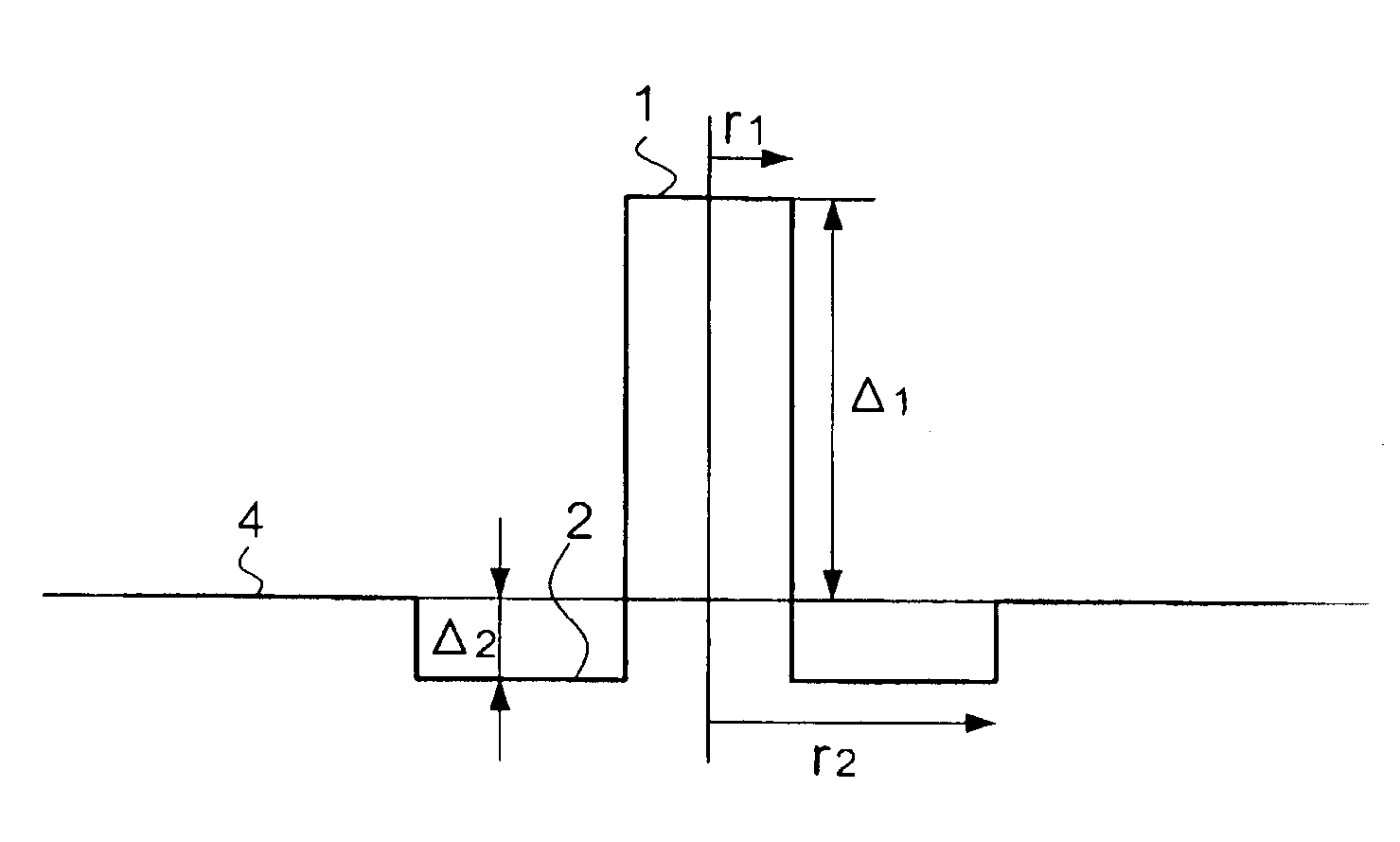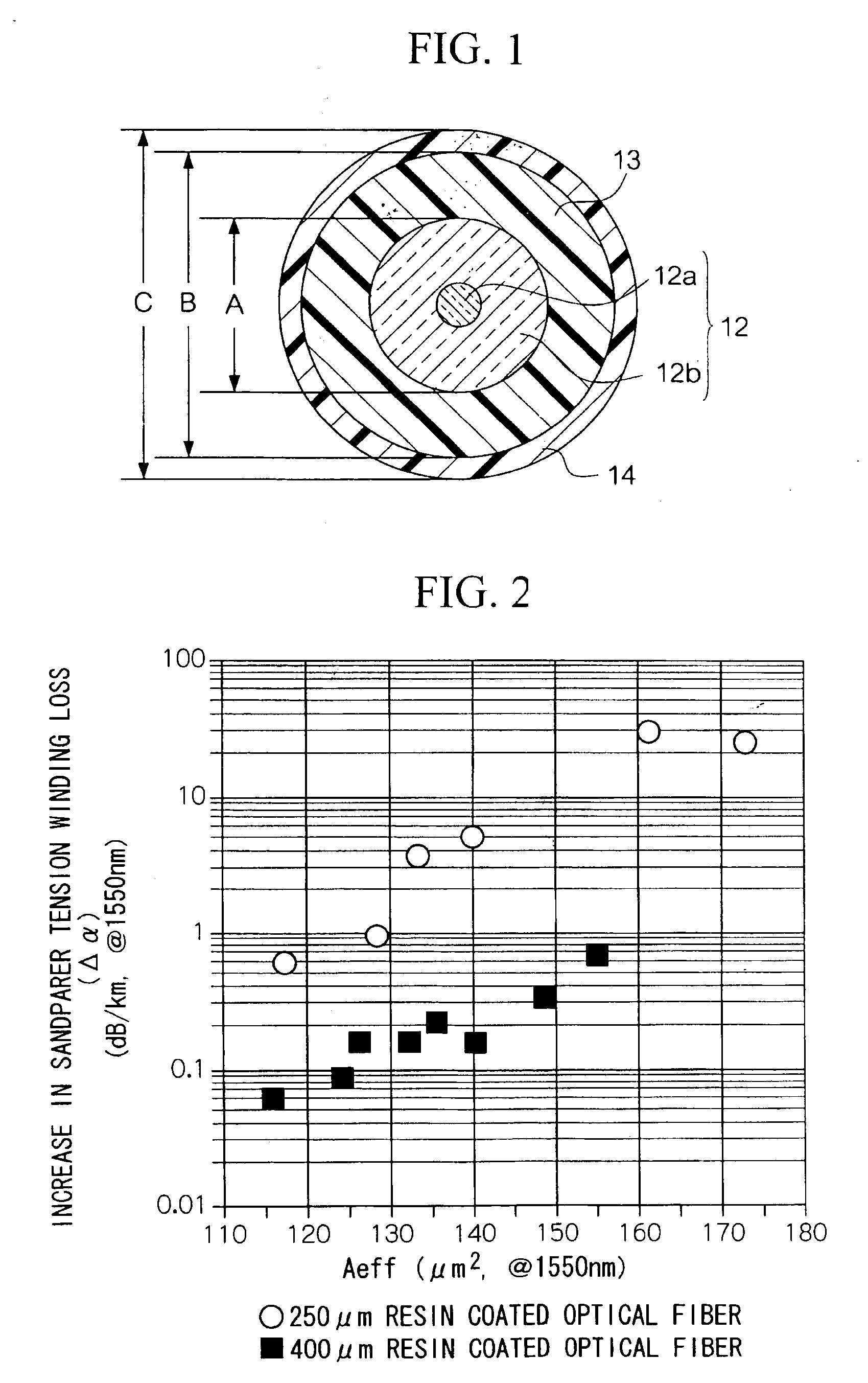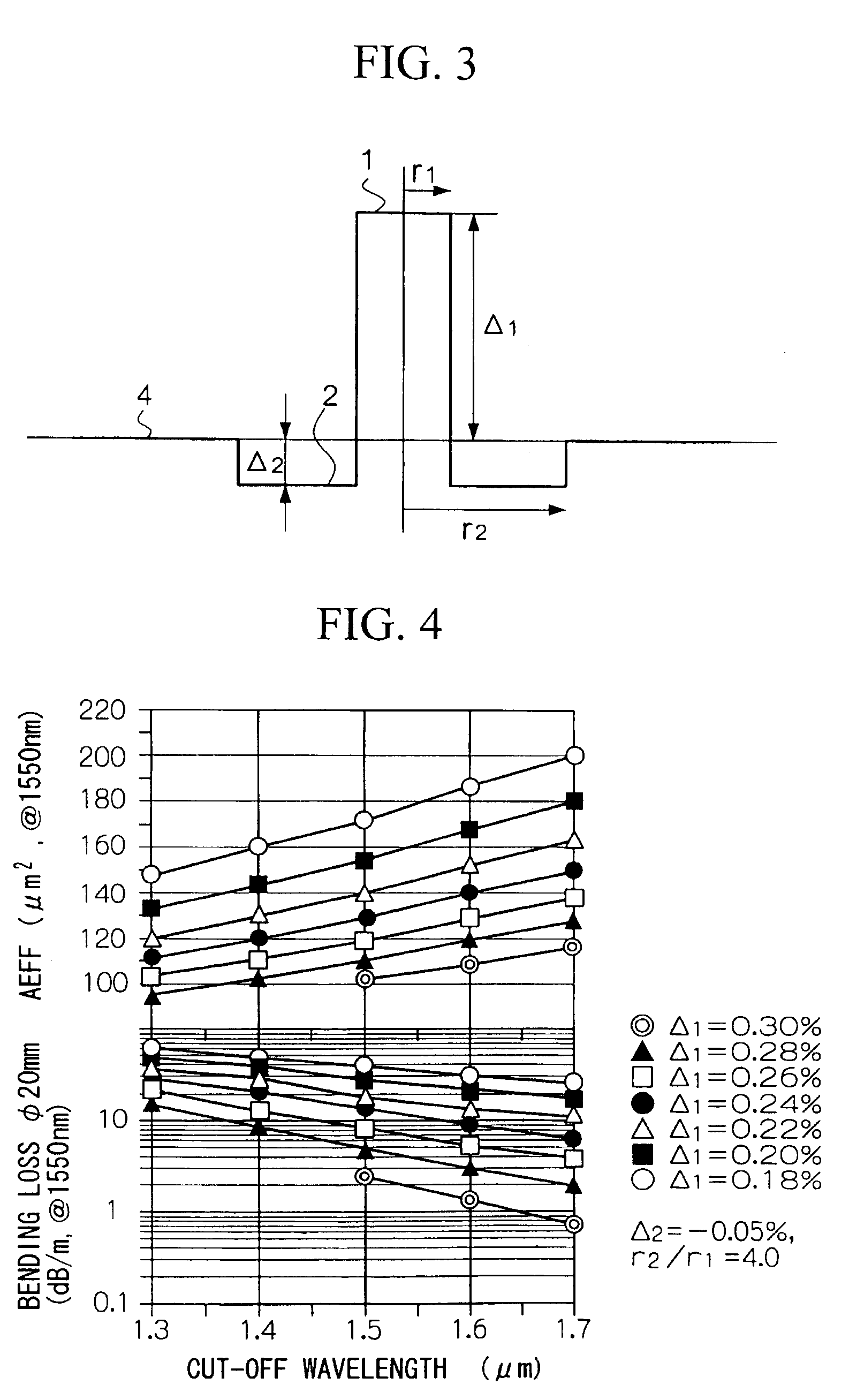Optical fiber and optical transmission system
a transmission system and optical fiber technology, applied in the field of optical fiber and optical transmission system, can solve the problems of difficult to significantly reduce nsub>2 /sub>in a quartz-derived optical fiber, complicated refractive index profile development, and high cost, so as to reduce nonlinearity, reduce bending loss, and avoid transmission loss
- Summary
- Abstract
- Description
- Claims
- Application Information
AI Technical Summary
Benefits of technology
Problems solved by technology
Method used
Image
Examples
embodiment
[0102]Embodiments of the present invention will now be explained in detail.
example 1
[0103]An optical fiber having the refractive index profile shown in FIG. 3 was fabricated using the VAD method. The central core was comprised of germanium-doped quartz glass, the middle part was comprised of fluorine-doped quartz glass, and the cladding was comprised of pure quartz glass.
[0104]The Δ1 and Δ2 in this optical fiber were 0.24% and −0.05%, respectively. r1 and r2 were 6.6 μm and 26.5 μm, respectively. The outer diameter of the cladding was 125 μm. The characteristics of this optical fiber are shown in Table 1. Each of the characteristic values were measured at 1.55 μm. The cut-off wavelength was measured using the 2 m method.
[0105]
TABLE 1Cut-offWavelengthwavelengthAeffMFDΔ1Δ2r1:r2(μm)(μm)(μm2)(μm)0.24−0.051:4.01.5501.5513212.7bendingincrease inouterlossTrans-sandpaperdiameter(dB / m)missionWavelengthDispersiontensionof2R =lossdispersionslopewinding losscoating20 mm(dB / km)(ps / nm / km)(ps / nm2 / km)(dB / km)(μm)10.20.188+20.7+0.0620.15400
example 2
[0106]An optical fiber was prepared in the same manner as in Example 1, with the exception that the central core was comprised of pure quartz glass and the cladding was comprised of fluorine-doped quartz glass.
[0107]The optical characteristics of this optical fiber were the same as those shown in Table 1 for the optical fiber in Example 1, with exception that the transmission loss was 0.178 dB / km, 0.01 dB / km less than the optical fiber in Example 1.
PUM
 Login to View More
Login to View More Abstract
Description
Claims
Application Information
 Login to View More
Login to View More - R&D
- Intellectual Property
- Life Sciences
- Materials
- Tech Scout
- Unparalleled Data Quality
- Higher Quality Content
- 60% Fewer Hallucinations
Browse by: Latest US Patents, China's latest patents, Technical Efficacy Thesaurus, Application Domain, Technology Topic, Popular Technical Reports.
© 2025 PatSnap. All rights reserved.Legal|Privacy policy|Modern Slavery Act Transparency Statement|Sitemap|About US| Contact US: help@patsnap.com



